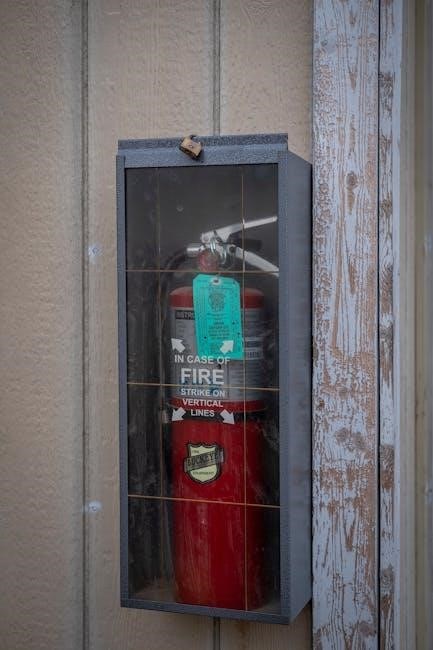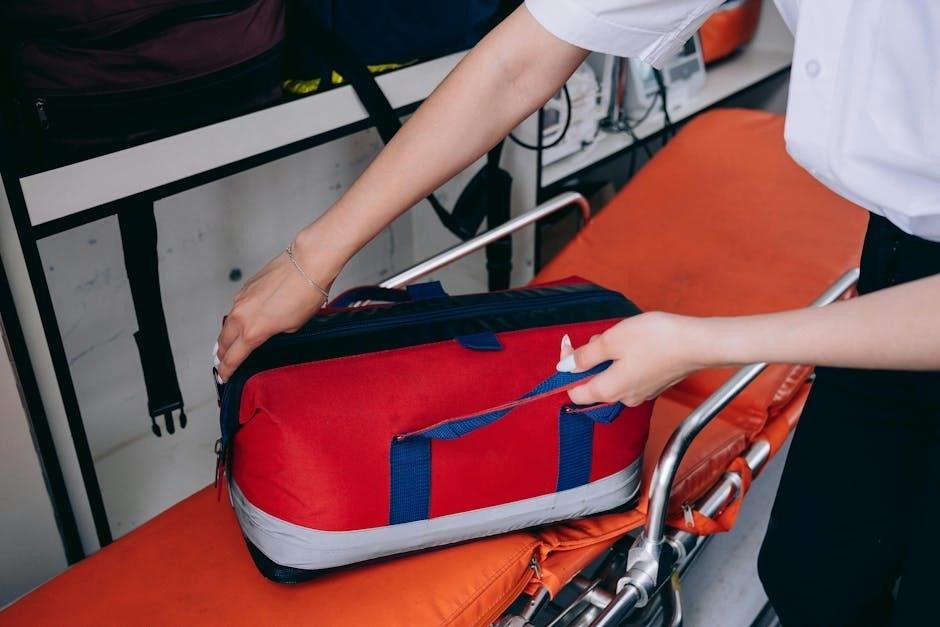Sig Sauer P320 Manual Safety Kit: An Overview
The Sig Sauer P320 manual safety kit provides users with an added layer of security. This aftermarket addition allows for a manual engagement of a mechanical safety; It offers enhanced peace of mind for handling the P320 pistol.
The Sig Sauer P320 manual safety kit presents a significant upgrade option for P320 owners seeking an additional layer of mechanical safety. Given the modular design of the P320 platform, integrating a manual safety is feasible, allowing users to customize their firearm to meet specific preferences. This kit typically includes all the necessary components. Such as levers, detents, and related hardware to convert a non-manual safety P320. This conversion requires careful installation, potentially including modifications to the fire control unit (FCU) or grip module. Consulting a gunsmith is advisable. The manual safety feature provides users enhanced control and confidence. Especially during handling and storage.

Components of the Manual Safety Kit
The manual safety kit typically includes essential parts. These are the left and right manual safety levers and the manual safety detent. These components work together to enable manual engagement of the safety.
Manual Safety Levers (Left & Right)
The manual safety levers are integral components of the Sig Sauer P320 manual safety kit. These levers, positioned on both sides of the firearm, enable the user to manually engage or disengage the safety mechanism. They provide a tactile and visible indication of the pistol’s safety status. The levers are designed for easy manipulation, ensuring quick access in critical situations. Made from durable materials, they withstand regular use and maintain reliable performance. Correct installation is paramount to ensure proper function and prevent accidental disengagement. These levers work in conjunction with the detent to securely lock the trigger mechanism.
Manual Safety Detent
The manual safety detent is a crucial component within the Sig Sauer P320 manual safety mechanism. This small, precisely engineered piece functions to retain the manual safety levers in their selected positions, either engaged or disengaged. The detent ensures that the safety levers remain firmly in place. It prevents unintended movement during handling or operation of the firearm. Manufactured from high-quality steel, the detent provides durability and consistent performance. Its proper installation is essential for the reliable function of the manual safety system. It requires careful placement to ensure correct engagement with the safety levers. The detent contributes to a safer carry.
Installation Process
Installing the P320 manual safety kit involves specific steps. These ensure proper function. Depending on the FCU, modification might be necessary. Following instructions carefully is crucial for safe and reliable operation of the firearm.
FCU Modification (If Required)
The Fire Control Unit (FCU) might require modification to accommodate the manual safety. Some P320 FCUs are not initially designed for a manual safety. This necessitates creating a detent notch. This notch is essential for the manual safety detent to function properly. The MSAFE-T kit offers tools and templates for this conversion. AB Prototype also cuts the slot into non-manual safety FCUs.
Careful attention must be paid to ensure correct alignment and depth. Improper modification can compromise the safety and reliability of the firearm. Professional installation or meticulous adherence to instructions is strongly recommended. It will ensure the modification is done correctly.

Conversion Services
Several services offer professional conversion of your Sig Sauer P320. These services install the manual safety kit. They ensure proper function and reliability of your modified firearm. This provides a safe, tested upgrade.
Professional Installation Options
For those not comfortable performing the installation themselves, professional gunsmiths and Sig Sauer authorized service centers offer installation. These professionals ensure the manual safety is correctly installed. They also ensure it functions safely. Opting for professional installation provides peace of mind. You can be confident that your P320’s manual safety is properly fitted. This will guarantee reliability. Services often include function testing with a factory slide assembly. Some offer a quick turnaround, sometimes within a week. Cost can vary. Expect to pay around $210 including shipping for the service. This involves sending your P320 to the service provider and having it returned to you once the installation is complete. This is a convenient solution. It is especially useful for individuals lacking the tools or expertise for DIY installation.
Compatibility
Ensuring the Sig Sauer P320 manual safety kit’s compatibility is crucial. Considerations include caliber, such as 9mm, ;40 S&W, .357 SIG, or .45 ACP. Grip module compatibility also plays a key role in the proper fit and function.
Caliber Considerations (9mm, .40 S&W, .357 SIG, .45 ACP)
When considering the installation of a manual safety kit on your Sig Sauer P320, understanding caliber-specific nuances is essential. The P320 platform accommodates various calibers, including 9mm, .40 S&W, .357 SIG, and .45 ACP. However, the manual safety kit’s compatibility may vary depending on the specific caliber of your firearm.
Ensure that the kit you select is explicitly designed for your P320’s caliber to guarantee proper fit and function. Some kits may be universal, fitting multiple calibers, while others are caliber-specific. Always verify compatibility before proceeding with the installation.
Using an incompatible kit can compromise the safety and reliability of your P320, potentially leading to malfunctions or unsafe operation. Consulting with a qualified gunsmith is advisable.
Grip Module Compatibility
Grip module compatibility is a crucial factor when installing a manual safety kit on a Sig Sauer P320. The P320’s modular design allows for interchangeable grip modules. However, not all grip modules are created equal, especially concerning manual safety integration.
Some grip modules are specifically designed to accommodate a manual safety, featuring the necessary cutouts and interfaces for proper installation. Others may require modification to function with a manual safety kit. Standard P320 grip modules often need alteration.
X-Series grip modules and those designed for the M17/M18 may have different compatibility requirements. Always verify that the grip module you intend to use is compatible with the manual safety kit you’ve chosen.
Failure to ensure proper grip module compatibility can result in improper safety function or prevent installation.

MSAFE-T Kit
The MSAFE-T kit by Sig Mechanics enables conversion of non-manual safety P320 FCUs. This allows the use of a factory manual safety assembly. It includes templates and tools for modifying the FCU.
Converting Non-Manual Safety FCUs
The MSAFE-T toolkit by Sig Mechanics is designed to convert any non-manual safety P320 FCU. This conversion allows the use of a factory manual safety assembly. The kit includes templates and tools to modify the Fire Control Unit (FCU), enabling compatibility with manual safety components. Specifically, the kit facilitates cutting a detent notch. This notch is necessary for installing the manual safety detent. Successfully converting the FCU allows for integrating manual safety levers. The kit may also include templates for modifying X-Series grip modules. This modification ensures proper fit and function with the newly installed manual safety. Proper installation is crucial for safe and reliable operation.

Pros and Cons of Installing a Manual Safety
Installing a manual safety on a Sig Sauer P320 offers both advantages and disadvantages. A primary benefit is increased safety and peace of mind, especially for users accustomed to manual safeties. The added mechanical layer can prevent unintentional discharges, particularly during holstering or handling. However, a manual safety introduces an extra step in the firing process. This step could potentially slow down response time in a critical situation. Training and practice are crucial to mitigate this risk. Some argue that relying solely on a manual safety can lead to complacency regarding other safety protocols. Furthermore, installation may require modifying the FCU or grip module, potentially voiding the warranty. Ultimately, the decision depends on individual preferences and risk assessment.

